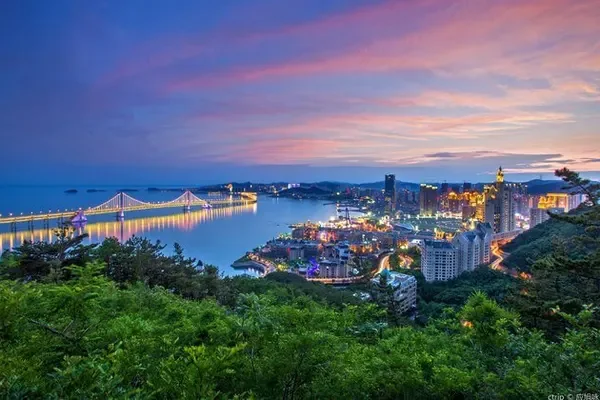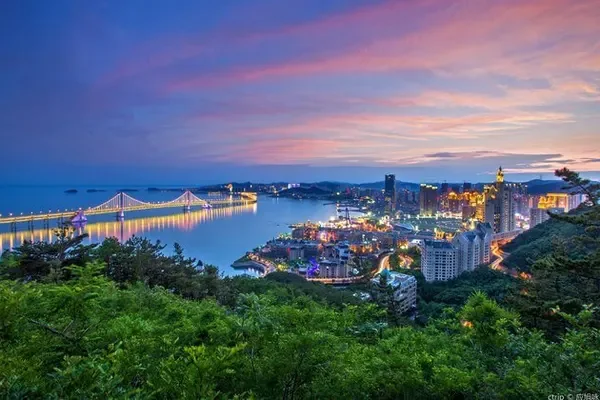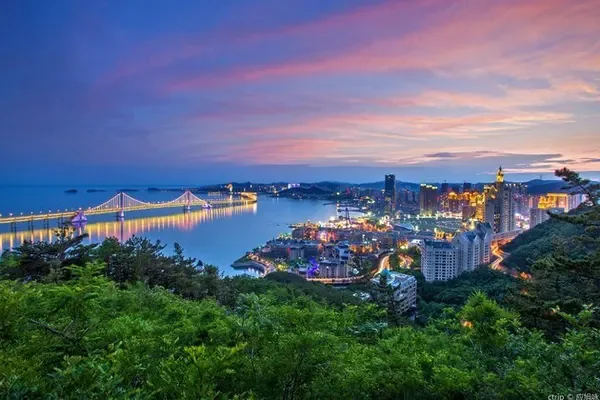Xiangshan is very familiar to Beijingers. Some people go there four or five times a week, and some even go there every day. Most people go to Xiangshan to climb mountains, see red leaves, exercise, and breathe fresh air, but they don't know much about the cultural landscape of Xiangshan. In fact, Xiangshan is very large and rich in content, with many historical sites and cultural landscapes.
Xiangshan refers to Xiangshan Park. It is located at the east foot of the Xiaoxishan Mountains in the northwest suburb of Beijing, 20 kilometers away from the urban area. It is a large-scale mountain forest park with royal garden characteristics. Xiangshan Park was built in the 26th year of Jin Dading and has a history of more than 800 years. The Yuan, Ming, and Qing Dynasties all built a separate palace here, which was a place for royal tourists to stay. In the 10th year of Emperor Qianlong's reign in the Qing Dynasty, pavilions, towers, pavilions, palaces, corridors and pavilions were built here, forming the famous 28 scenic spots in the capital. Later, a wall was built and named "Jingyi Garden", which ranked first among the "Three Mountains and Five Gardens" in the west of Beijing, so Xiangshan Park is very royal.
Because it is close to the urban area, the transportation is convenient, the forest is dense, the environment is quiet, the air is fresh, and you can climb up to see the beautiful scenery of the capital, so it is very popular among citizens. In late autumn, the mountains are full of red leaves and the forests are fully dyed, so it has become a scenic spot for viewing autumn in Beijing.
At the beginning of October, after the National Day holiday, my wife and I spent two days on a rough tour of Xiangshan, mainly the landscape of the shallow mountainous area.

(This picture comes from the Internet)
Day 1: East Gate, Qinzheng Hall, Xiaobailou, Jingcui Lake, Cuiwei Pavilion, Xiangshan Temple, Shuangqing Villa, Laiqingxuan, Xiabiaodeng, Zhishi Pavilion, Laiqiu Pavilion, Zhao Temple, Jianxin Zhai, Liuli Pagoda, Spectacle Lake, Cableway Uphill, Incense Burner Peak, Walking Downhill, Xiangwu Cave, Xiangshan Hotel, East Gate.
Day 2: East Gate, Qinzheng Hall, Zhiyuanzhai, Zhisong Garden, Laiqiu Pavilion, Yuhua Temple, Youqiu Pavilion, Duojing Pavilion, Zhao Temple, Glasses Lake, North Gate, Biyun Temple, North Gate, Qinzheng Hall, East Gate.
(two)
On the second day, continue to enter the east gate and go up the mountain from the north side of Qinzheng Hall.

Looking up at the top of the mountain, there are looming pavilions on Xianglu Peak.

The courtyard behind Qinzheng Hall is Zhiyuanzhai, which was built in 1761 and used to be the administrative office of Emperor Qianlong in Xiangshan.


It consists of three parts: Zhiyuanzhai, Yunqinzhai and Tingxuexuan. It was once devastated by the British, French and Eight-Power Allied Forces. After liberation, Xiangshan Park was established and restored.

Zhisong Garden is a newly developed scenic spot, with more than 100 ancient pines and cypresses on both sides of the main walkway.



The pines and cypresses are tall and strong, with a majestic shape, which contrasts with the glazed pagoda of Zhaomiao, forming a landscape of "Qiong Song Pagoda Shadow".



Come to Qiuting, Yuhua Temple, and come to Yanfei Weixiu.

Yanfei Weixiu is connected to Yuhua Temple by a cross-street building.


Soon arrived at Duojing Pavilion.



Although the multi-view pavilion is not as wide as the incense burner peak, fortunately, the distance is relatively close, and the effect is not bad.
After arriving at Duojing Pavilion, go down the mountain and head towards Biyun Temple.


Via Spectacle Lake.

Jiari Pavilion.

Persimmons are hanging all over the branches.

Exit the north gate and arrive at Biyun Temple. Biyun Temple is outside the north gate of Xiangshan Mountain. Tickets need to be purchased separately. Ticket price: 10 yuan.
Generally speaking, Xiangshan and Biyun Temple are always connected together, but after so many visits to Xiangshan, they have never entered the gate of Biyun Temple, so I will make up this lesson this time.
Biyun Temple was first built in the second year of Yuan Zhishun (1331). According to legend, it was built by Yelu Alemi, a descendant of Yelu Chucai, and it was originally called Biyun Temple. After Ming and Qing dynasties, it was continuously expanded.
Biyun Temple is built according to the mountain situation, facing east from west. There are six courtyards in the central main road, and there are a group of small courtyards on the left and right. The main buildings on the central axis are Shanmen, Maitreya Hall, Daxiong Hall, Bodhisattva Hall, Sun Yat-sen Memorial Hall, and Vajra Throne Pagoda in sequence.

There is a pair of stone lions in front of the gate. The stone lions squat on the xumizuo, their stature is stalwart and lifelike. It is said that the stone lion was made by Wei Zhongxian, and it is a very artistic stone carving in the Ming Dynasty. The carvings are extremely exquisite and complex. Not only are there carvings on the girdle of Xumizuo, but there are also decorations on the upper and lower squares, and even the upper and lower owls are carved. This is the best among stone lions and is very rare.


The Shanmen hall is very conventional, with three bays, and the middle is the coupon door.
There is a golden plaque on a blue background on the mountain gate, on which "Biyun Temple" is written in four languages: Manchu, Han, Mongolian and Tibetan, written in Qianlong's handwriting. The plaque of "Biyun Temple" is a bit worn out, and there are two statues of Hercules guarding the gate of the temple in the hall, commonly known as the two generals Hengha.

The xumizuo on both sides are carved meticulously, a rare one.


The Maitreya Hall is a courtyard with two entrances, and the bronze Maitreya Buddha is enshrined in the center of the hall.


There are bell and drum towers on both sides of the front of the hall.


Three entrances to the courtyard - the Daxiong Palace, in the middle of the plaque of Qianlong's imperial pen: Nengren Jizhao.

In front of the Daxiong Hall, there is a pair of Sutra pillars, with countless dragons carved all over the body, and the carvings are exquisite.



The roof of the building is a single eaves and four corners roof, brick and stone imitation wood structure, and four vertical ridges carved with dragons.




The building is a hexagonal column engraved with scriptures, and each edge is engraved with a dragon.


The base is a fully carved Xumizuo. The dragon engraved on the upper square and the deer engraved on the waist are also extremely exquisite, highlighting the status of Biyun Temple as a royal temple.

The copper incense burner in front of the Daxiong Hall looks rusty, and the base is engraved with "Biyun Temple".



Although it looks dilapidated, the detailed carvings are extremely exquisite.


In the courtyard of the Daxiong Palace, there are towering ancient trees and lush greenery. It can be felt that this is not only a temple, but also a beautiful garden landscape.

The four-entry courtyard is the Bodhisattva Hall, which is a newly restored building and is currently not open. The introduction board at the door said: There are five Bodhisattvas enshrined in the hall, surrounded by mountains and seas of clouds and twenty or forty statues of heaven.

A plaque is hung in the middle of the main hall, and the inscription "Still Performing Three Cars" is written on it. Check the information and learned: three carts, sheep carts, deer carts, and ox carts. A Buddhist term, referring to the three vehicles. It is said that the ram cart is used as a metaphor for the Shravakayana (Hinayana), the deer cart is used as a metaphor for the Enlightenment Vehicle (Middle Vehicle), and the ox cart is used as a metaphor for the Bodhisattva Vehicle (Mahayana).

The most striking thing is the octagonal stele pavilion in front of the main hall, which was rebuilt by Emperor Qianlong of Biyun Temple. The stele pavilion was built in the 14th year of Qianlong in the Qing Dynasty. It has double eaves, octagonal and pointed yellow glazed tile roofs, upper and lower eaves decorated with bucket arches, red walls and red columns, and colored paintings of two dragons playing with pearls. In the stele pavilion, there is an inscription on the stone stele of Qianlong's prefabricated reconstruction of Biyun Temple.
It can be seen from the yellow glazed tile roof of the stele pavilion that the high level of the stele pavilion can also show the status of Biyun Temple as a royal temple. Because in ancient Chinese architecture, only the emperor's palace and temples built by order can use yellow glazed tiles.

The stele is engraved with the inscription on the restoration of Biyun Temple made by Emperor Qianlong.

The top is carved with a dragon, and the body of the stele is decorated with lotus branches.


There are tortoises and sea walls below.
The rebuilt Biyun Temple stone stele made by Emperor Qianlong is very rare in the existing stone steles in terms of fineness, delicacy and integrity, and can be called a rare treasure.

The fifth courtyard is the Sun Yat-sen Memorial Hall, which was originally the Puming Miaojue Hall. On March 12, 1925, Dr. Sun Yat-sen died in this hall for four years. In 1954, it was opened as the Sun Yat-sen Memorial Hall. It displays the glass-covered steel coffin donated by the former Soviet government and the ink and writings left by Mr. Sun Yat-sen and other cultural relics. The plaque above the main entrance is written by Soong Ching Ling.
The horse chestnut trees in the courtyard are tall and dense, with flourishing branches and leaves, giving people a sense of sacredness.
On top of the Sun Yat-sen Memorial Hall, come to the last and highest one-entry courtyard - King Kong Throne Pagoda.

First of all, above the steps is a wooden archway.




There is nothing special about the wooden archway. The brick carvings on the screen walls on both sides are very delicate, complicated and exquisite.


Behind the wooden archway is a stone archway, with four pillars and three floors soaring to the sky, all made of white marble, with the words "Amitabha Buddha Anyang Temple in the Western Paradise of Paradise" written in gold letters in the middle.


A pair of stone lions in front of the square.


There are carved dragons, cranes and auspicious clouds in the workshop.

The top is a stone imitation wooden bucket arch and roof, and the tile eaves and bucket arches of the roof are all carved from a single piece of white marble.



The stone pillars are full of carved patterns, and the top is carved with mythical animals.



The drum-holding stone with clamp rods is exquisitely carved, round and generous, and it is the first among the existing drum-holding stones in Beijing.






There are four stone-carved screens on both sides. The core panels of the screens are carved with figures, Buddha statues, stone lions, and unicorns. The shapes are vivid and the carvings are exquisite. They are rare stone carvings.




Every detail of the stone archway is meticulously crafted and meticulous, showing exquisite craftsmanship, which can be called a treasure in the stone archway.

After the stone archway, there is a small stone bridge.



Crossing the stone bridge, there is a stone stele pavilion on the north and south sides. The stele pavilion has double eaves, the upper floor is circular, and the lower floor is octagonal.



There is a built-in stele of the Vajra Throne Pagoda made by Emperor Qianlong in the stele pavilion. The south stele pavilion is in Manchurian and Mongolian characters, and the north stele pavilion is in Chinese and Tibetan characters.


The interior of the stele pavilion is a dome, and there is a caisson with a dragon head on the top.

Continuing upwards is a brick archway with three gates and seven floors, which is equivalent to the mountain gate of the Vajra Throne Pagoda.

There are still a pair of stone lions on both sides of the gate.



The workmanship of the archway is also exquisite, and the blue bricks and red walls are more elegant.



Finally, we came to the Vajra Throne Tower. Now we are not allowed to climb the tower, we can only look up, and the visual effect is greatly reduced.

Take a look down, it looks better.
The Vajra Throne Pagoda of Biyun Temple is located at the westernmost end of the temple and is also the highest point of the Biyun Temple complex. It was built during the Qianlong period when it was repaired and expanded by the emperor. According to the inscription on the Vajra Throne Pagoda stele made by Emperor Qianlong: In the thirteenth year of Qianlong, Indian monks presented the pattern of the Vajra Throne Pagoda.
The Vajra Throne Pagoda of Biyun Temple is the largest and most luxurious among similar pagodas in China. It is all carved with white marble.

The whole tower is built on a two-story square stone tower foundation, and there is a stone fence on the platform of the tower foundation.

The plane of the King Kong throne is in the shape of "Ya", with a coupon door at the lower part of the front, and a forehead with "the lamp is in Bodhi" embedded on it. The relics of Mr. Sun Yat-sen's clothing and crown are now sealed in the niche inside the coupon gate for commemoration and admiration for later generations.



On the side of the King Kong throne, there are countless layers of relief flowers, Buddha statues, dragon heads, eight treasures, etc. from bottom to top. Since you can't enter, you can only watch from a distance. It's a small regret. I will definitely come back again in the future.
So far, all the buildings on the central axis of Biyun Temple have been appreciated.
There are two representative buildings on both sides, one is the Hall of Five Hundred Arhats on the right, and the other is the Water Spring Court on the left.

In terms of time, I didn't enter the Five Hundred Arhats Hall, and its architecture is very beautiful from the outside.




Shuiquanyuan seems to be a secluded place away from the temple. You can hear the crisp birdsong, feel the bursts of pines and the gurgling water, and your mood is quieter than in the temple.



Biyun Temple is indeed not only a temple, but also a garden, or a museum. There are all kinds of knowledge to learn, cultural relics to see, artwork to appreciate and scenery to visit here. I thoroughly enjoyed it and hope to come back several more times in the future.
Exit Biyun Temple, re-enter the north gate of Xiangshan Mountain, pass Jingjing Lake, Zhisong Garden, Zhiyuanzhai, pass Qinzheng Hall and exit the east gate, and the tour ends for a day.
(Finish)



